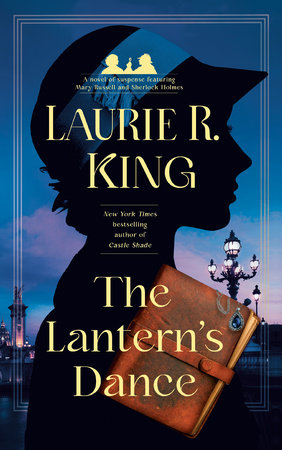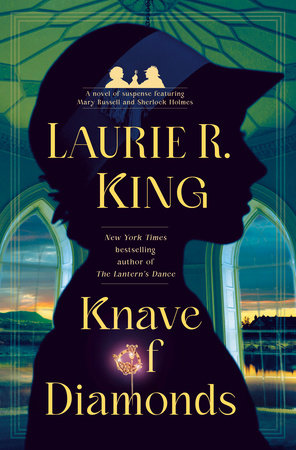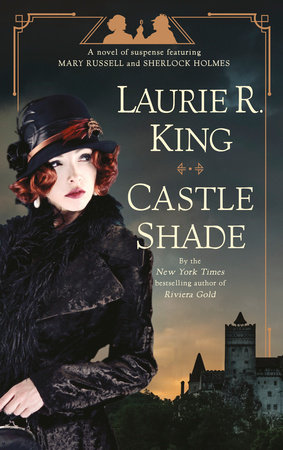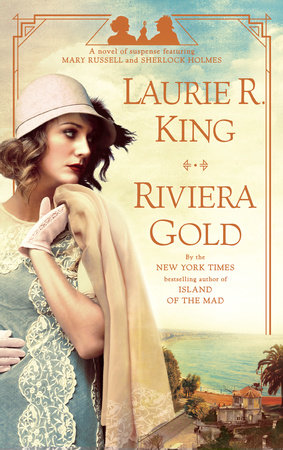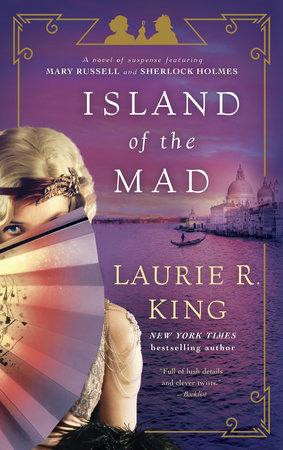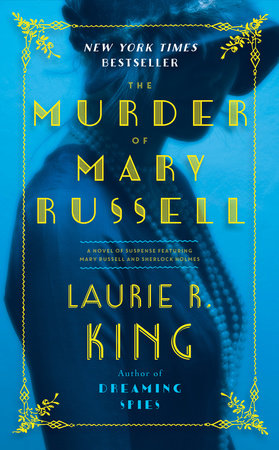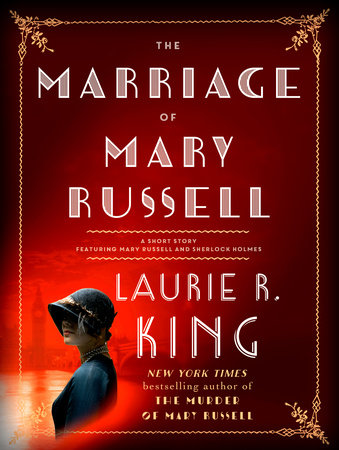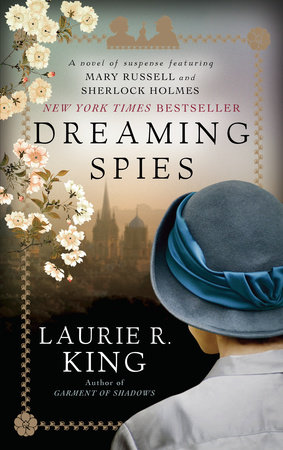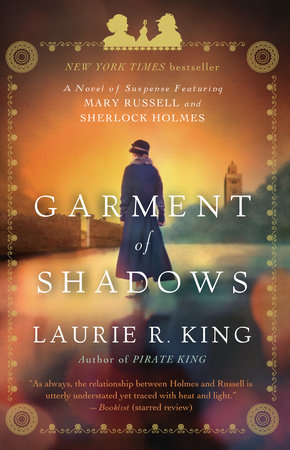Excerpt
The Lantern's Dance
Chapter One“Let me help,” he said.
“I can manage.”
“Russell, I’ll get the—”
“I’m fine, Holmes,” I snapped. I was not fine. And when it came to admitting that an infirmity might require some help, I was proving nearly as cantankerous as Sherlock Holmes himself could be.
“I can—”
“Holmes, just pay the ruddy driver, I’ll send someone out for the bags.” Assuming they hadn’t changed their minds as to the invitation. Or gone off to the South of France for the month.
“Watch the—”
“I see it!” And nearly tripped over it, one crutch-leg sliding into an ill-fitting stone on the walk.
But he let me get on with my halting progress, stumping along the walk-way towards the brightly painted door while the taxi-driver undid the rope strapping our trunks and valises in place. We’d expected to be met when we got off at the station in nearby Délieux. And though the absence of a car might have been a message of sorts—that antipathy had returned, that we should simply continue on to Paris—we had been invited, we had accepted, and we had cabled ahead with our information.
And even if the absence of greeting at the station had been due merely to the chronic forgetfulness of an artist, one would have thought that Damian’s doctor fiancée, who had impressed even Holmes as being marvellously competent, would remember the arrival of her soon-to-be in-laws. (Stepmother-in-law? Me?)
I reached the end of the pathway without mishap, negotiated my way up the two low steps, settled my balance so I could reach out for the bell—then stopped, abruptly, three feet from the front door. After a moment, leaving the crutches tucked under my aching arms, I unfurled my fingers from the grips and raised them, hands outstretched.
Resentments, unsettled scores, and long-standing acrimony were one thing.
What I had not anticipated was being met by the sound of a break-action shotgun snapping into place behind me.
Chapter TwoI stood utterly still. So did the person with the shotgun. The voices from the lane concluded their business. A car door slammed, the taxi’s engine clattered into life, the gate creaked, footsteps began—and cut short as the world’s first consulting detective saw the tableau on his son’s doorstep.
The sound of the motorcar faded away. Holmes and I waited, either for the man to pull down on the trigger or to decide that we were not the enemy he seemed to be anticipating.
“Qu’est-ce que vous voulez?” His voice was raised so as to reach both of us. It was not, to my relief, Damian.
“Nous cherchons la famille Adler,” I said over my shoulder. We’re looking for the Adler family.
“Vos noms?”
“The name is Holmes,” came the voice from the gate. “Sherlock Holmes.”
“Ah,” the man behind me said, in English this time. “Good.”
The shotgun mechanism clicked. I let out a shaky breath and lowered my hands onto the crutch grips, manoeuvring myself around.
On the surface, my would-be assailant was a French agricultural worker: soft cap; tie-less, once-white shirt under a working man’s waistcoat and red braces; and soil-coloured trousers of hard-wearing twill. His shirtsleeves were rolled up on meaty forearms, revealing a tattoo whose significance no doubt Holmes would read, but to me looked like a scrawl of dark chalk dissolved by time. His shoes, however, were no peasant clogs, but fit him well and had once cost a pretty centime.
The shoes led me to reconsider his status—and indeed, the set of his shoulders made it clear that this was not a gardener in the habit of tugging his forelock, or even doffing his cap. Beyond that, Damian clearly trusted this man enough to give him the name of Sherlock Holmes.
“Bonjour, Monsieur,” I said.
“You, I think, will be Madame Holmes?”
“Er, yes.”
“I most abjectly beg your good pardon, Madame. I am Gervais LaRue. Monsieur Adler said you would come. Have you hurt—ah, Monsieur,” he said, holding out a hand for Holmes to shake. “I apologise for my ambuscade on your good wife. Please, come in—here, I shall open. Madame, you have injured yourself?”
“A minor sprain, nothing to worry about.” It was a foolish injury, a combination of a small dog, a distracted mind, and some slippery tiles on a Berlin railway platform. My brusque tone of voice told him that I did not wish to talk about it.
He made sympathetic noises, but hastened to retrieve a heavy skeleton key from a pocket and fitted it into the door, fiddling it into place awkwardly around the gun draped across his other arm. “Il faut plus d’huile,” he muttered to himself, then grunted in relief when the key turned and the door came open.
“Where are the Adlers?” Holmes demanded.
“Ah, Monsieur, now that is a tale—come, my wife will bring food, and I will tell you all.”
M. LaRue trotted ahead of us into the dim interior, ducking through one door and reappearing without the gun, then crossing the hallway to disappear through another. His footsteps went soft as he passed over carpet, then came the sounds of windows and shutters being thrown open. Holmes turned back down the path to fetch our bags. LaRue came out, squeezing past me to trot after Holmes. I decided there was little point in blocking the hallway, so stepped inside what proved to be a large sitting room, its stale air rapidly dissipating with the morning breeze.
On the outside, the Adler home was a substantial stone-walled, two-storey, red-tile-roofed French house with bright flowers along the walk and, unlike any of its neighbours in this village to the south of Paris, shutters and door painted an orange so bright, a child might have chosen it.
The inside too was a mix of traditional and modern, with a rococo limestone fireplace and ornate fringed ceiling lamps—once gas, now electrical—that looked askance at the brilliant blocks of colour in the carpet and the dozens of bottles lining the wall behind a cocktail bar decorated with a modernist version of Bosch’s The Garden of Earthly Delights, its polished metal top set with ash-trays from half a dozen Parisian cafés. Gilt-framed portraits and landscapes shared the walls with art that resembled industrial schematics, primitive cave-paintings, or in one case, an artist’s actual palette. The curtains were pale green linen, the seats were mostly Deco armchairs in several shades of darker green velvet, and the low table before the fireplace looked like a piece fallen off of an aeroplane. A leather settee in a startling shade of fuchsia was blessedly muted by the magnificent old Turkish rug draped across it. An elegant antique glass-fronted bookcase was stuffed with modern novels and books for children. On its top was a tangle of deer antlers, out of which peeped a child’s teddy.
The orange doors, angular furniture, shin-endangering table, and avant-garde rectangles of painted canvas on the walls testified to the presence of Damian Adler: Surrealist artist, occasional murder suspect, and consequence of the affair between an American contralto and the world’s most eminent English consulting detective, some thirty years before.
The children’s books and teddy bear were signs of one Estelle Adler, Damian’s four-and-a-half-year-old, disconcertingly intelligent daughter.
The pale green curtains, the modern-but-subdued wallpaper, and the pieces of furniture that looked as if they might actually be used for sitting upon demonstrated the conciliatory influence of Damian’s wife-to-be, Dr Aileen Henning.
And underlying these three strong modern personalities, I caught glimpses of another strong individual: the rococo fireplace, ceiling lamps, and Turkish throw-rug were signs of the opera singer and renowned adventuress, Irene Adler. Damian’s mother, my husband’s long-ago . . . paramour.
This house had once belonged to her. In his early years on Baker Street, Irene Adler had come to Holmes’ attention as the suspect in a case of blackmail—and promptly claimed his youthful heart by outwitting him soundly. He eventually discovered that she was not only innocent, but that she was the wronged party, fighting to protect her future with the man she loved. She and Godfrey Norton had married, escaping with their dignity and their love—only to have it turn to ashes when he died and she was injured in an accident a few years later.
Holmes heard of the accident as he was working his way back across Europe after an enforced absence from London. He tracked her down in Montpellier, to offer his condolences. Matters progressed—only to have her briskly send him on his way home to London in April of 1894, with no more explanation than she wished to return home to America.


